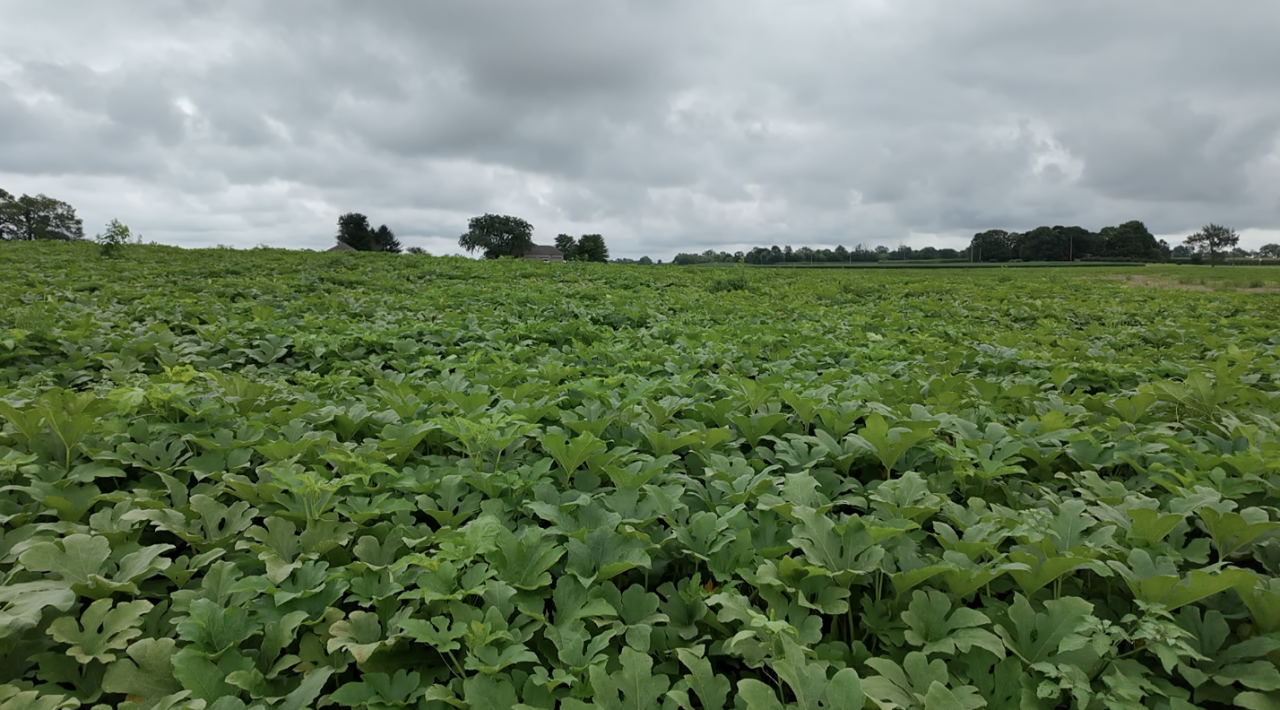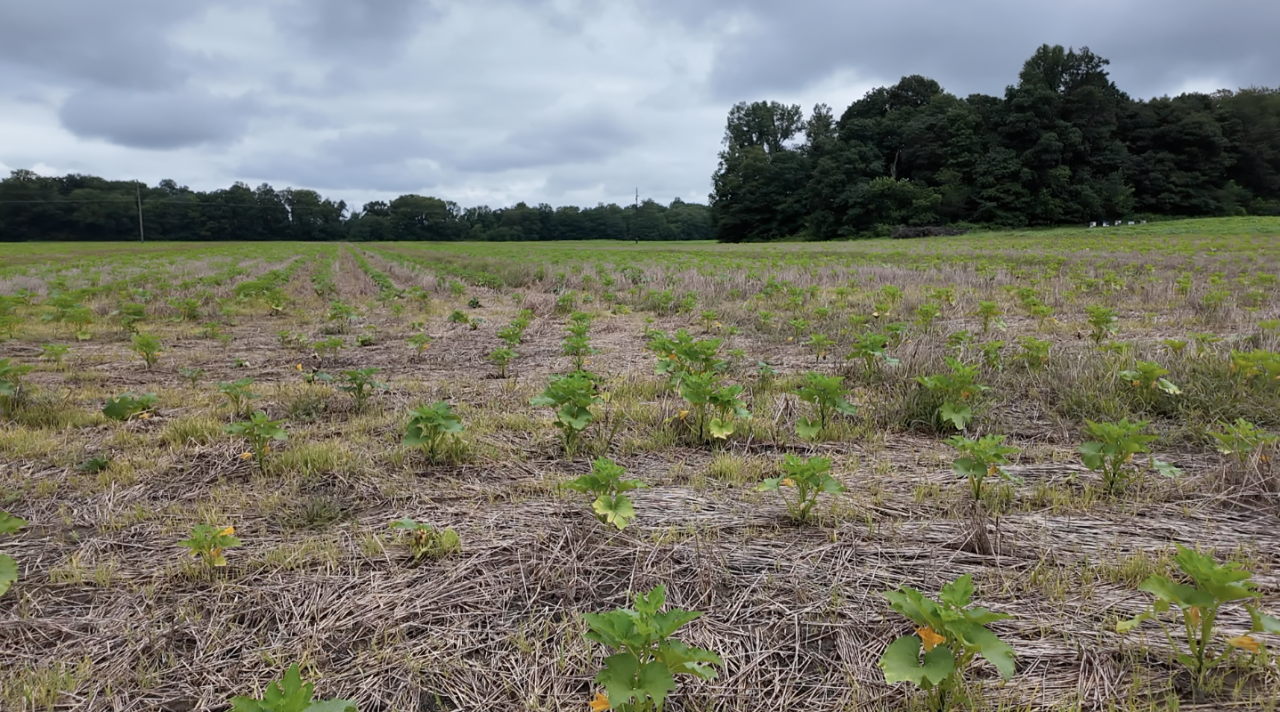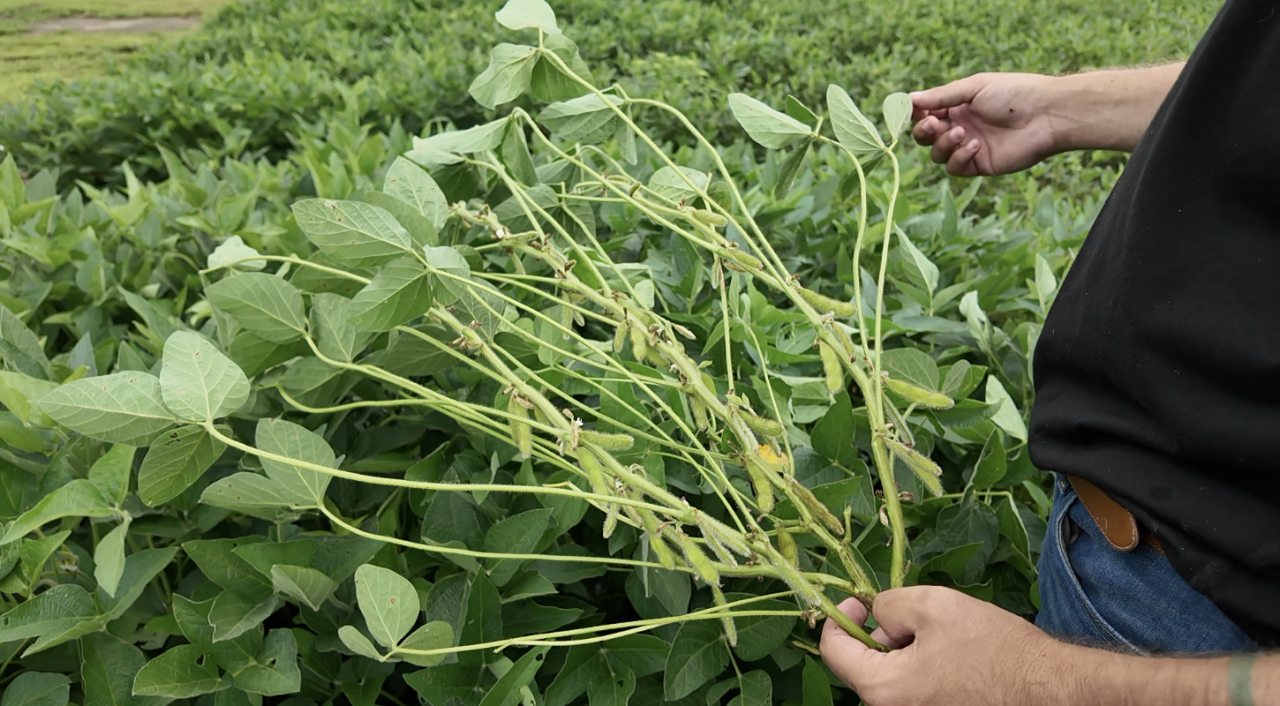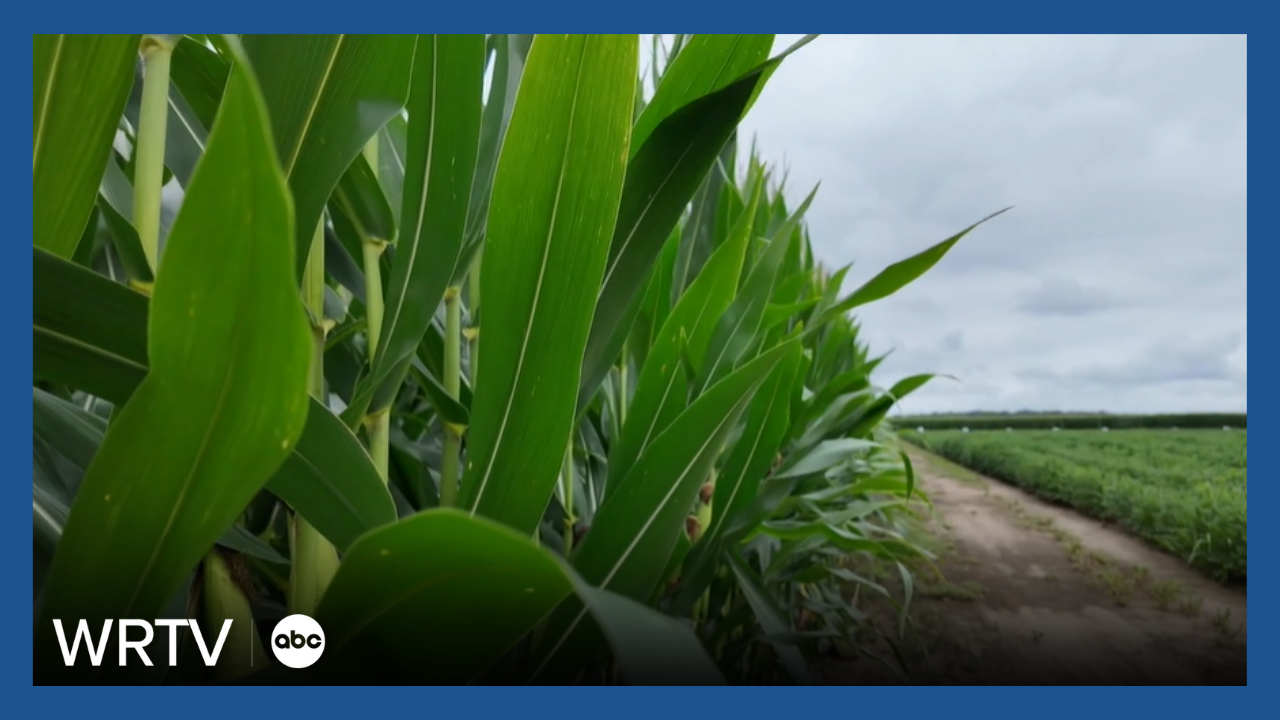BARTHOLOMEW COUNTY — Crops have gone through a variety of weather challenges in 2025.
"You pretty much got about a 5% control on what you do," said farmer Adam Freyn.
Challenges this year have included: an overabundance of spring, a stretch of hot, humid weather and many downpours producing even more rain this summer.
Freyn and his dad are the two men behind Pardieck & Son Farms in Columbus. The two have been farming there since 1990.

When they first acquired the farm, they only had about 80 acres, but they've worked through the years to turn it into a 1500-acre operation.
While corn and beans seem to be doing okay for the farmers, they said they have seen a bigger impact on their pumpkins and watermelons.
"They should definitely be a little farther along than what they are," Freyn shared when visiting the pumpkin patch.

Two patches of pumpkins were planted just three weeks apart. While one is lush with some pumpkins forming on the vine, the other is more sparse with flowers just starting.

Freyn shared that too much rain since the newer patch was planted has washed nitrogen out of the soil.
Many farmers work closely with agronomists, who help determine soil health and what nutrients would be best to supplement the crops.
Tim Cooke with Core Ag Solutions is an agronomist who works with hundreds of farms.

"I use that soil science to help relay what gets into the plant, and that way we can make a lot smarter choices on what we spend our money on," Cooke explained. "At this point in the economy, we can't waste any money at all."
Cooke shared that this year, he's noticed several farms struggling with potassium in the soil.
A lot of Cooke's job is trial and error to see what works for the crops.
"Across the board, no matter how much dry potassium was applied, a lot of times that potassium still hasn't moved through the plant," Cooke shared. "A big move for us has been doing more potassium in that liquid form."
Cooke went on to explain that many row crops were planted later this year because there were so many rainy days this spring.
"The corn that did get planted early, kind of late April to early May, has done really well," stated Cooke. "We're going to keep a close eye on that corn that was planted later, like late May to June, because it did go through a lot of heat stress periods."

Freyn is also worried about the disease pressure from the heat. This time of year, farmers are spraying fungicides to protect their crops from disease.
The rain has made this challenging for Freyn.
"We had another eight inches in a matter of like five days, about a week ago," Freyn said of the downpours during the hot, humid stretch.
"We spray corn, beans about three times. We spray pumpkins, watermelons, all that, about five or six for fungicide. We actually had to get a drone fly in because it was so wet, we couldn't get on the ground," Freyn recalled.
Freyn compares this growing season to recent years.
"Last year was a tremendously good year for us," Freyn shared. "The year before that was really good. But this year is definitely not going to be as good as it has been in the past."
Freyn is optimistic he will still be able to break even this year with the crops he produces.
Cooke went on to share that even when farmers harvest, they are still faced with the uncertainty of a tough market.
"We get to really figure out how to allocate our dollars and spend our dollars," Cooke said. "We can't afford to have a bad attitude."
The weather challenges aren't done yet. Cooke went on to say that farmers need to remain vigilant, especially those who haven't sprayed fungicides, because we could start to see tar spots.

"This is a time to get out and scout every day if you can," Cooke implored of his fellow farmers. "Keep your eyes out for the tar spot."
Freyn says despite all the tough work and the challenging year, he wouldn't change his lifestyle.
"Hopefully, we just have a good harvest," Freyn said.
Pardieck & Son still has plenty of watermelons that they are supplying to Kroger, and they have plenty of sweet corn to go around. Freyn says he expects their corn and soybean yields to be high this fall.
"Try to keep your foot on the gas pedal where it makes sense, where the budget fits, but finish crop out strong," Cooke encouraged.
The most recent drought monitor, released July 31, shows that only the northernmost portion of the state is still in drought in some areas. At the start of 2025, about 50% of the state was in drought. Now, less than 20% of Indiana is in drought.






